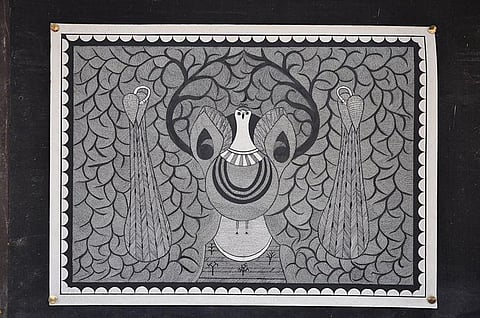
- Home
- न्यूजग्राम
- India
- World
- Politics
- Entertainment
- Culture
- Lifestyle
- Economy
- Sports
- Sp. Coverage
- Misc.
- NewsGram Exclusive
- Jobs / Internships

Madhubani Paintings, also known as Mithila Paintings are the quintessence folk art form of Mithila Region of Bihar. The art form is incredibly old and the name 'Madhubani' which means, 'forest of honey,' has a lineage of more than 2500 years.These paintings are the local art of Madhubani district of Bihar, which is also the biggest exporter of Madhubani paintings in India.
Recently, Madhubani painting style came into limelight after some artists decided to renovate the Madhubani Railway Station by painting a huge Madhubani painting on the walls of the railway station. The painting spans across an area of 7000 square feet and is expected to attract tourism to the Madhubani District. Madhubani art has received international and national attention in recent times.
Paintings and art are a reflection of the culture and tradition of the place from where they originate. Madhubani paintings are an important part of the Indian Culture. Madhubani painting in black and white are some of the oldest and most beautiful art that people can witness and admire. The style, which was losing its importance earlier is once again emerging as a major art form.
A modern representation of Madhubani art form. Wikimedia Common
Here are 10 facts about Madhubani paintings which will blow your mind :
A Madhubani Paintings can be made using different materials on different mediums. Wikimedia Commons
Madhubani paintings are made without sketches. Wikimedia Common
Madhubani paintings rarely have any empty spaces. Wikimedia Common
